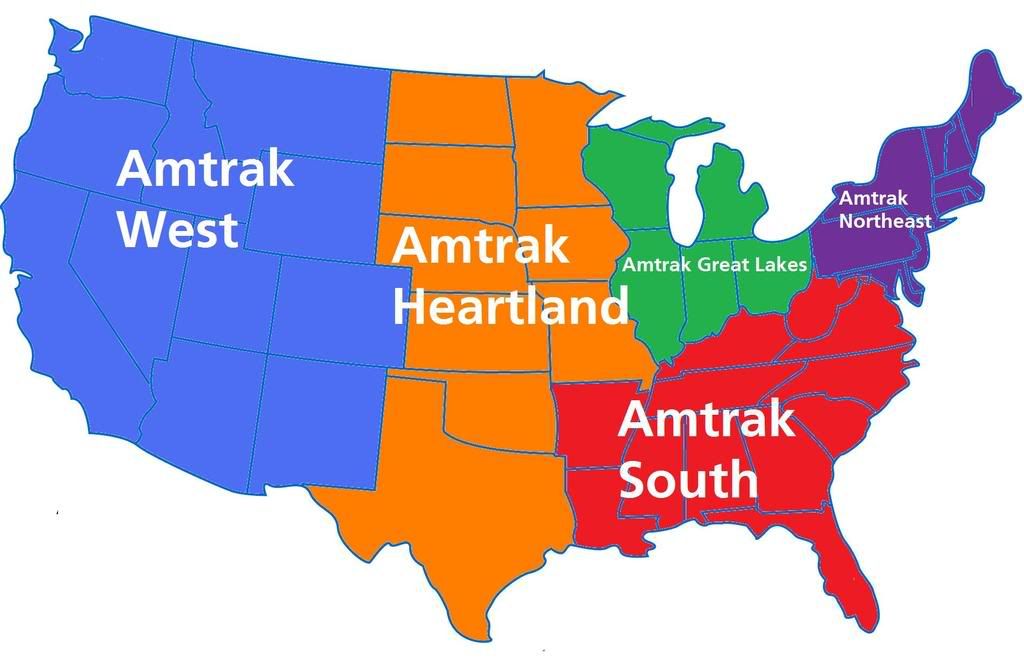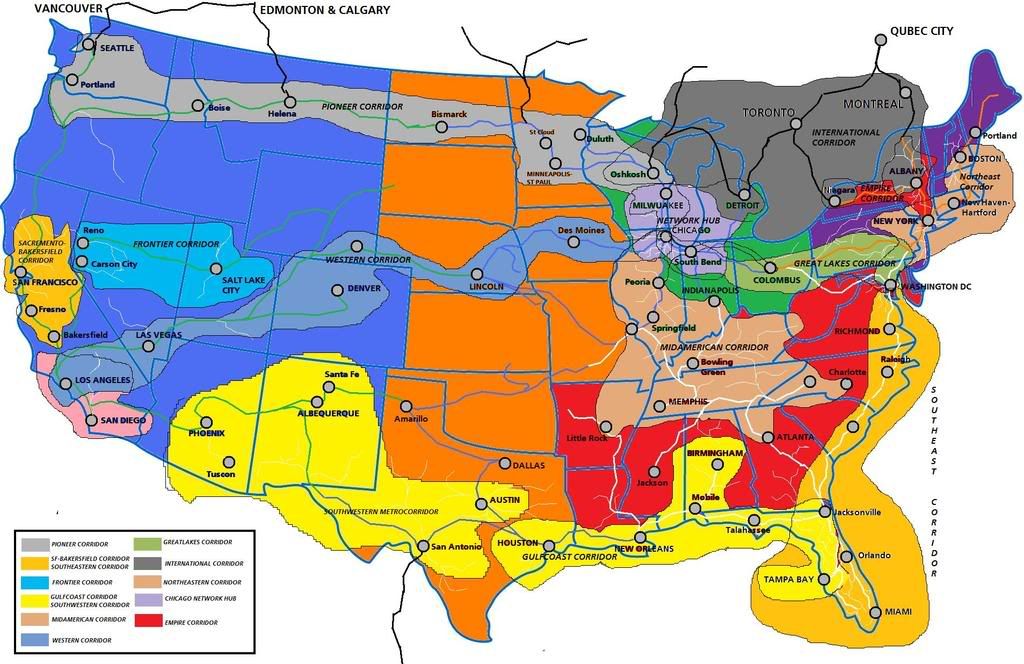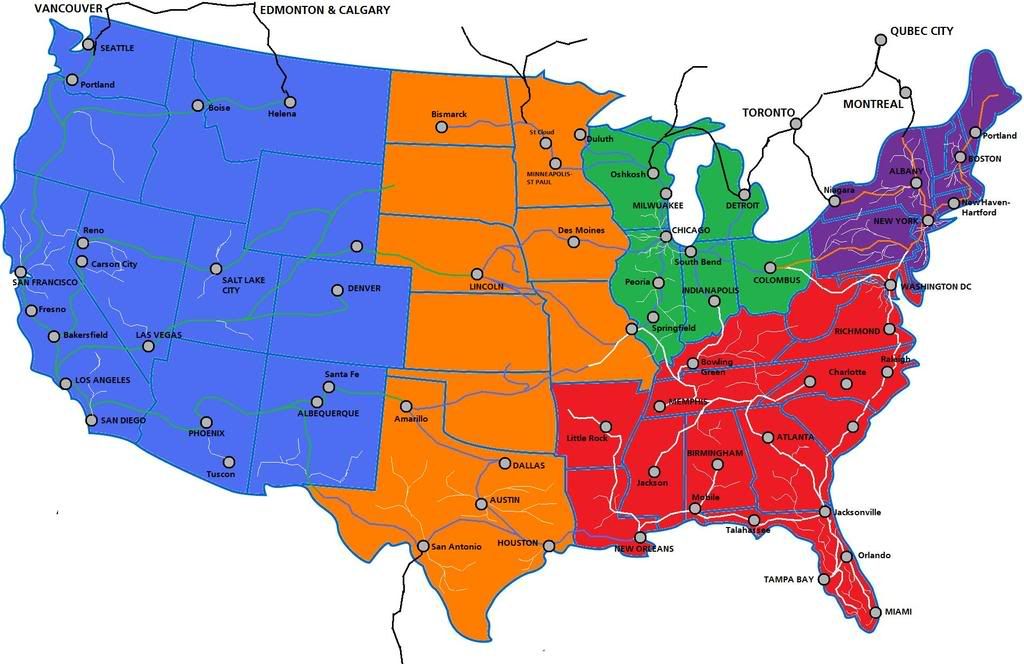Oh god, I've created a monster. Help me before the posts run into multiple pages.
Because those sorts of people don't use the trains because they are so slow.
A train is a form of transportation, not a fairground ride. It is a way to get from point A to point B.
I have been on high-speed trains before. You can see the scenery quite clearly from the train, and you certainly aren't about to get sick.
Airline travel will NOT go away simply because of airlines going out of business. Pan-Am was unimaginably huge when it went under... and look! The airline industry still exists! And it will continue to exist. And no amount of corporate shenanigans are going to stop people using the airlines.
See above. Speed does not equal sickness, acceleration does. I assure you that the trains will not go 0 to 186 in twelve seconds.
Notice how people don't get sick from airline travel, even though there you in fact ARE going from 0 to 186 in twelve seconds. And then traveling at 500+ for nine hours.
Speak for yourself. I'd kill to have the VRE get me home faster after school. It'd let me get more work done at home.
What.
Right, highly densely populated megalopoli (plural of megalopolis)(I think) like the Northeast Corridor are EXACTLY the place to put high-speed rail. A typical run between city centers of about 30 miles allows for the train to get up to top speed and decelerate in time to stop at the next station. Also, you get no passengers when you're trying to run high-speed trains out in the sticks.
There has been exactly one high-speed rail collision that resulted in fatalities, and I'll give you that it was a hell of a doozy. (the Eschede train disaster) But given this, one could argue that high-speed rail is the safest form of transportation in the history of mankind.
One thing I would like to really point out to you: High Speed Rail ACTUALLY EXISTS AND WORKS. Look at Europe. Look at Japan. Hell, even the Chinese have it now. They don't have motion sickness problems or people clamoring over lost scenery. They do, however, have working rail networks that actually make money.
I for one have not run into 1 person go UGH I wish this darned train go faster,never once have I heard that.
Because those sorts of people don't use the trains because they are so slow.
And the reason is,why you don't hear it,is because the people want time to just relax,and take a step outside of the normal world and watch the scenery roll by.
A train is a form of transportation, not a fairground ride. It is a way to get from point A to point B.
If the train goes an upward of 200mph,how can you accomplish that? You can look out of the same window and do the same thing, hell some people may even become sick because of it.
I have been on high-speed trains before. You can see the scenery quite clearly from the train, and you certainly aren't about to get sick.
And no airlines are suffering BADLY. They are either on the verge of going under,many have filed for chapter 11,and others are talking about a merge between to very large companies(which usually doesn't happen) just to stay afloat. I would like to see your sources saying that these airlines are bringing in HUGE profits. I means sure this time of year,maybe,but after it calms down after the holidays I can guarantee you won't see the amount of people getting on a plane as we did a year to 2 or 3 years ago.
Airline travel will NOT go away simply because of airlines going out of business. Pan-Am was unimaginably huge when it went under... and look! The airline industry still exists! And it will continue to exist. And no amount of corporate shenanigans are going to stop people using the airlines.
Well, those people just want to get rid of Amtrak all together, or at least privatize it and let it get on with its life (my view). It's a business, not a government-sponsored tour of american scenery.But what I can agree with is that people are not going to change. And I never wanted you to get that impression. I may have just worded it wrong... But a lot of the people do NOT want the trains to go faster for many reasons. 1. Tax money! No one wants to pay it.
2. If you do get on a train some people WILL get sick because of the speed,so Amtrak should have some barf bags in each seat.
See above. Speed does not equal sickness, acceleration does. I assure you that the trains will not go 0 to 186 in twelve seconds.
Notice how people don't get sick from airline travel, even though there you in fact ARE going from 0 to 186 in twelve seconds. And then traveling at 500+ for nine hours.
3. Even the most stuck up employee who commutes to New York in the morning,might not want it changed to get there FASTER FASTER FASTER because he may,want to just have a few hours to get there,to just sit there and read the paper,maybe catch up on some work he should have done the night before etc.
Speak for yourself. I'd kill to have the VRE get me home faster after school. It'd let me get more work done at home.
I frankly think that the East Coast of the US is not the place to do it. Simply because of all the dense population,and its not like just a small portion of the Northeast is densely populated,the whole thing is. And if you would notice that the high speed lines travel into a Major Hub,like many trains do. But also travel through very large open areas,which help the train "open up" so to speak.
What.
Right, highly densely populated megalopoli (plural of megalopolis)(I think) like the Northeast Corridor are EXACTLY the place to put high-speed rail. A typical run between city centers of about 30 miles allows for the train to get up to top speed and decelerate in time to stop at the next station. Also, you get no passengers when you're trying to run high-speed trains out in the sticks.
And if 1 unfortunate disaster does happen where the train derails(known to happen since they are trains and all) I would LIKE the chance to be able to walk away from the thing,rather then be killed on impact,if I wanted to do that I would just get on a plane and smash into the ground. It simply makes no sense to me whatsoever.
There has been exactly one high-speed rail collision that resulted in fatalities, and I'll give you that it was a hell of a doozy. (the Eschede train disaster) But given this, one could argue that high-speed rail is the safest form of transportation in the history of mankind.
One thing I would like to really point out to you: High Speed Rail ACTUALLY EXISTS AND WORKS. Look at Europe. Look at Japan. Hell, even the Chinese have it now. They don't have motion sickness problems or people clamoring over lost scenery. They do, however, have working rail networks that actually make money.



